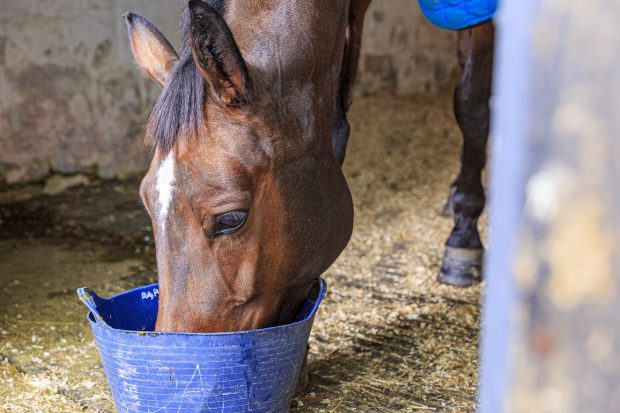In horses, the power to gallop and jump comes from the ability to extract energy from food and transfer this to energy in the muscles.
However, energy extracted from food does not just fuel movement. About 60% of the horse’s daily energy output is used in maintaining its bodily systems.
Types of fuels
The three main nutrients of equine diets are carbohydrates, protein and fat. Of the three, protein content is the one most followed by owners and some vets as a measure of the energy content, but it is not the best.
Protein is the least likely nutrient to be used as an energy source – its main role is in the manufacture of new body proteins. Large excesses of protein, such as a spring grass diet, will be converted to fat and stored.
A horse’s main energy sources are carbohydrates and oil. Carbohydrates include fibre, starch and sugar. The energy in fibre is only available to the horse though microbial fermentation in the hindgut. Starch and sugar are found in cereals (starch), fresh grass and molasses (sugar).
Oil is a popular energy source popular because it contains two to two-and-a-half times as much energy as cereals. It can be supplied as vegetable oil, or in high oil ingredients such as full fat soya or maize germ.
Processing fuel sources
The small intestine, which accounts for 20% of the digestive tract, receives food from the stomach. Starch, sugars and protein (as well as some vitamins and minerals) are absorbed in the small intestine.
Food typically takes an hour or less to pass through the small intestine and this rapid process ensures readily available energy. Any protein or starch which is has not been digested during this period will pass through into the large intestine.
The large intestine, which accounts for about 65% of gut capacity, is designed to process fibre. B vitamins are also synthesised and absorbed here. Fibre can stay in the hindgut for up to 48 hours, but the more digestible the fibre, the quicker the process.
Perfect performance
The ideal diet for competition horses depends on the nature of the competition, but it should always contain at least 50% as forage or fibre additions to the hard feed. A mixture of fibre, starch and oil fed in at least three feeds a day will provide the rest of the fuel required.
As a guide, low energy feeds tend to be high in fibre and low in starch and oil, while high energy feeds are traditionally low in fibre and high in starch. However, many feed companies have now developed high-fibre low-starch high-energy compound feeds.



